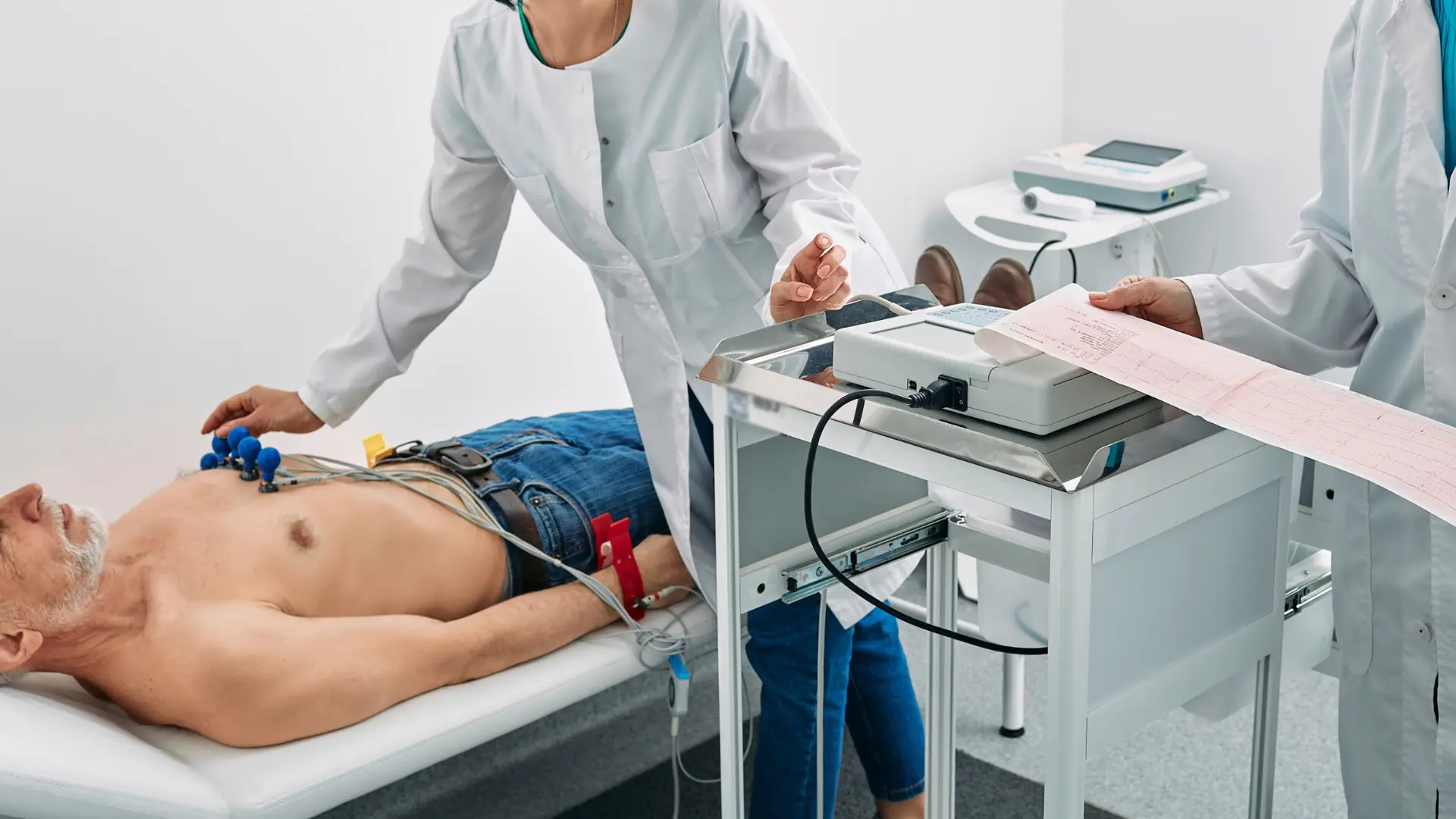
A Resting ECG (Electrocardiogram) is a simple, non-invasive test used to record the electrical activity of your heart while you are at rest. It provides a snapshot of your heart's rhythm, rate, and electrical conduction to help identify any abnormalities or potential heart conditions.
How Does a Resting ECG Work? 🤔
A Resting ECG captures electrical signals from your heart through electrodes placed on your body. These signals are displayed as waves on a graph📈, which a doctor interprets to assess your heart's function.
Types of Electrodes:
ECG Machine: A device that converts the signals into a visual graph for analysis.
Why is a Resting ECG Performed? 🔍
Your doctor may recommend a Resting ECG to:
Types of ECGs
While the Resting ECG is the most common, there are other types of ECGs tailored for specific purposes:
These variations provide additional insights into heart health beyond what a Resting ECG can capture.
What to Expect During a Resting ECG? 👀
What Happens After the Test? 📊 📝
After the test:
Key Takeaways 🌟
A Resting ECG is a quick, painless test that provides vital information about your heart’s health. It can be performed with adhesive or non-adhesive electrodes, making it adaptable to different clinical needs.
While it offers an important baseline, other types of ECGs, such as Exercise or Ambulatory ECGs, may be used for a more comprehensive evaluation.
If you experience any unusual symptoms or are due for a routine check-up, consult your doctor and book an appointment. ❤️
Take control of your health—book your appointment for a Resting ECG today.
DISCLAIMER: The information presented on this page has been intentionally condensed and simplified to make it accessible and easier to understand for the general audience. Its purpose is solely to provide basic awareness and education on the topic discussed. It is important to note that this content is not exhaustive and does not replace or serve as a substitute for professional medical advice, diagnosis, or treatment. Readers are strongly advised to seek consultations with qualified healthcare professionals or specialists for accurate assessment, personalized guidance, and appropriate medical care. Relying solely on the information provided here, without professional oversight, may lead to misunderstandings or inadequate treatment.
Privacy policy
Copyright ©2025 Klinika Kajo. Designed By Vizional